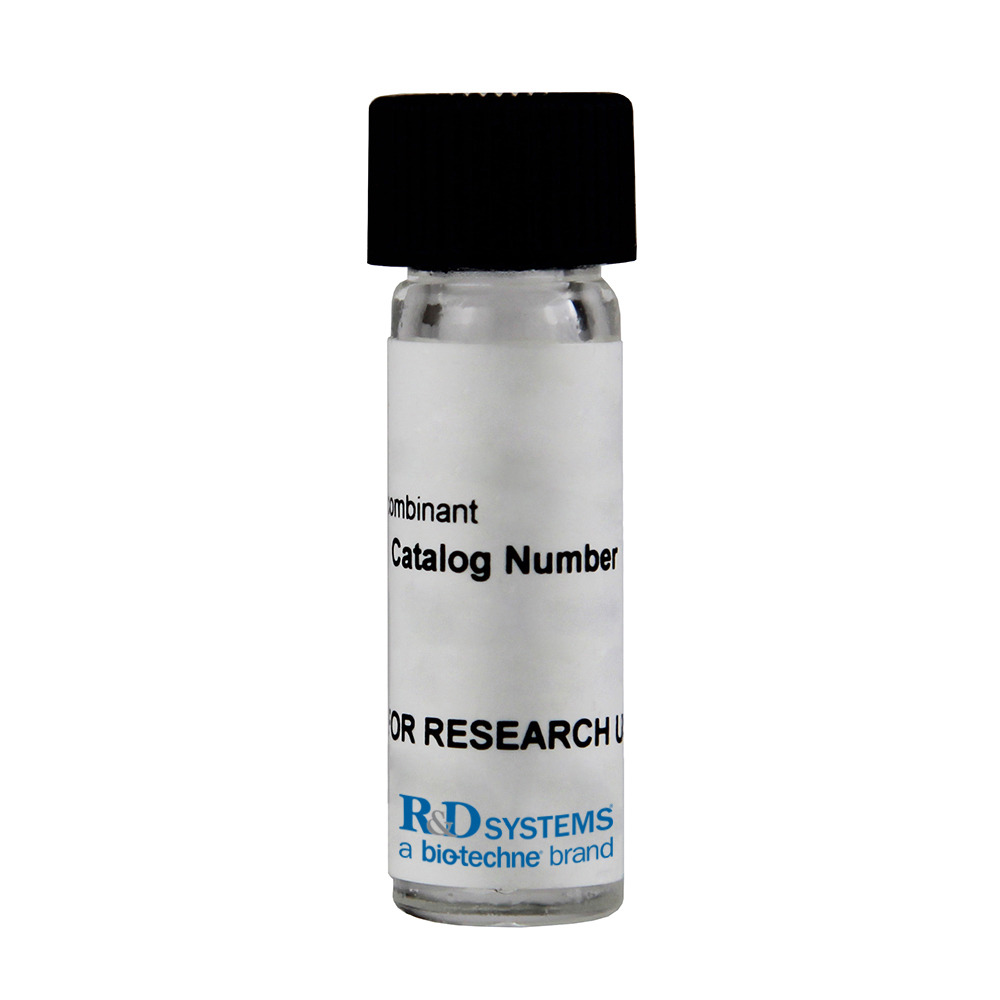Recombinant Human Methylated Ubiquitin Protein, CF
R&D Systems, part of Bio-Techne | Catalog # U-501


Key Product Details
Product Specifications
Source
Purity
Predicted Molecular Mass
Activity
Formulation, Preparation and Storage
U-501
| Formulation | Lyophilized from a solution in deionized water. |
| Reconstitution | Reconstitute at 10 mg/mL in an aqueous solution. |
| Shipping | The product is shipped with polar packs. Upon receipt, store it immediately at the temperature recommended below. |
| Stability & Storage | Use a manual defrost freezer and avoid repeated freeze-thaw cycles.
|
Background: Ubiquitin
Ubiquitin is a 76 amino acid (aa) protein that is ubiquitously expressed in all eukaryotic organisms. Ubiquitin is highly conserved with 96% aa sequence identity shared between human and yeast Ubiquitin, and 100% aa sequence identity shared between human and mouse Ubiquitin (1). In mammals, four Ubiquitin genes encode for two Ubiquitin-ribosomal fusion proteins and two poly-Ubiquitin proteins. Cleavage of the Ubiquitin precursors by deubiquitinating enzymes gives rise to identical Ubiquitin monomers each with a predicted molecular weight of 8.6 kDa. Conjugation of Ubiquitin to target proteins involves the formation of an isopeptide bond between the C-terminal glycine residue of Ubiquitin and a lysine residue in the target protein. This process of conjugation, referred to as ubiquitination or ubiquitylation, is a multi-step process that requires three enzymes: a Ubiquitin-activating (E1) enzyme, a Ubiquitin-conjugating (E2) enzyme, and a Ubiquitin ligase (E3). Ubiquitination is classically recognized as a mechanism to target proteins for degradation and as a result, Ubiquitin was originally named ATP-dependent Proteolysis Factor 1 (APF-1) (2,3). In addition to protein degradation, ubiquitination has been shown to mediate a variety of biological processes such as signal transduction, endocytosis, and post-endocytic sorting (4-7).
Reductive methylation of lysine residues renders Ubiquitin unable to form poly-Ubiquitin chains via lysine linkages with other Ubiquitin molecules. Methylated Ub can form a Ubiquitin-activating (E1) enzyme-catalyzed active thioester at the C-terminus allowing the molecule to be transferred to the lysines of substrate proteins (which can be mono-ubiquitinated). This is ideal for the reduction in poly-Ubiquitin chain length and rates of Ubiquitin conjugation.
References
- Sharp, P.M. & W.-H. Li. (1987) Trends Ecol. Evol. 2:328.
- Ciechanover, A. et al. (1980 ) Proc. Natl. Acad. Sci. USA 77:1365.
- Hershko, A. et al. (1980) Proc. Natl. Acad. Sci. USA 77:1783.
- Greene, W. et al. (2012) PLoS Pathog. 8:e1002703.
- Tong, X. et al. (2012) J. Biol. Chem. 287:25280.
- Wei, W. et al. (2004) Nature 428:194.
- Wertz, I.E. et al. (2004) Nature 430:694.
Alternate Names
Gene Symbol
UniProt
Additional Ubiquitin Products
Product Documents for Recombinant Human Methylated Ubiquitin Protein, CF
Product Specific Notices for Recombinant Human Methylated Ubiquitin Protein, CF
For research use only